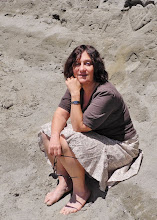OK, I'm hooked. I'm a Mark O'Connor blog addict. Fiddler/Violinist/Composer extraordinaire Mark O'Connor blows the lid off Shinichi Suzuki. On his blog, and on a public facebook page, O'Connor reveals what many educators and professional musicians have been secretly surmising all along, but dared not admit: The Suzuki Method is a "death sentence" to creativity, self-discovery, diversity, inventiveness and originality. I really believe this film clip speaks for itself, Suzuki offering a demonstration of "Jingle Bells" to teachers.
Through my own decades of experience as an educator, I find myself largely in agreement with O'Connor's conclusion that the loss of musical individuality is due to a regimented, militaristic method of rote learning. I was dismayed in our teaching studio when a young adult violinist received, but appeared unable to comprehend, a stylistic and logical fingering suggested by my husband. You mean Ringman or Middleman? was her reply, after being encouraged to shift up with the third finger. She was on her way to completion for Suzuki Certification. For a while, I had a pair of siblings that had studied violin under a Suzuki brand teacher which resulted in considerable frustration for myself and for them. Why? Note names were foreign to these students; notes had been identified as "low two", "high one," etc. And, sadly, I had a father in my studio who berated his four-year-old daughter for not performing "Lightly Row" on command, threatening to take away a beloved toy if she remained uncooperative. Let's face it, once the seed has been planted, the seed to turn off the brain and merely conform and mimic, the pupil's musical journey is compromised. I, myself, had been initiated with Suzuki Method as a five-year-old, even having been one of the first children to play for Suzuki in Boston's Jordan Hall during the mid 60's. But my mother, an amateur violinist, realized within months that the approach of playing by imitation was crippling. She had me reading duets with her in no time, as well as piano studies and eurythmics class. To this day, however, my blood runs cold if I'm asked to improvise.
With interest I read about Mark O'Connor's own method and philosophy, though I employ various approaches tailored to fit the needs of my students in my teaching studio:
"American
musical culture includes many other and wiser principles of
self-discovery, individualism, creativity, free spirit, journey,
diversity, and a whole host of other philosophies born out of a
multicultural experience. It is with these ideals and philosophies - the
"American System," that I created the "O'Connor Method" for learning
strings."
Back in 2004, with the venerable violinist Joseph Silverstein conducting Seattle's Northwest Chamber Orchestra, Mark O'Connor performed his "The American Seasons" to two sold-out shows. As concertmaster of that ensemble, I shared memorable moments with illustrious performers. It occurred to me that although the ensemble had difficulty grasping the complexity of O'Connor's syncopated rhythmic patterns, his devil-may-care attitude gave us just the boost we needed. Before the concert began, Silverstein explained to the audience that O'Connor's music wasn't "crossover" but mainstream American music full of folk-based themes in the way that Dvořák and Smetana wove in their own ethnic heritage. Certainly, the time is long overdue for present day violinists to stake their claim in the creative process, to regain the abilities lost over the past fifty years, such as the art of improvisation, transcription and composition, as O'Connor points out on his fabulous blog. Maybe we all need to breathe easier and let our hair down. But remember, we need not replace the great composers Bach, Mozart, Beethoven and Brahms in order to do so.
skip to main |
skip to sidebar

Meditations and Reflections on Life and Classical Music
Frantic
Please visit my other blog, Frantic: the Memoir
About Me

- kransberg-talvi
- I’ve been a violinist since the age of four. From studies in Boston with Sarah Scriven, I furthered my education at Juilliard Pre-College, Meadowmount, and with Jascha Heifetz in his masterclass at U.S.C. I married Ilkka Talvi (Of Music and Men) in 1984, and have to say, learned the most from him. After forty plus years of intensive concertizing, it is with pleasure that I turn my attention to teaching, writing, reading and reminiscing.